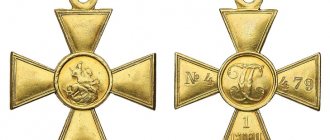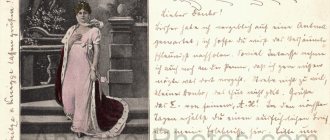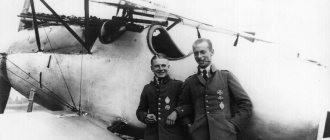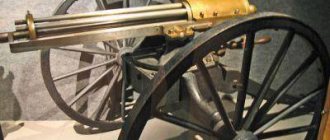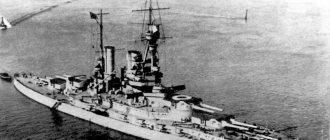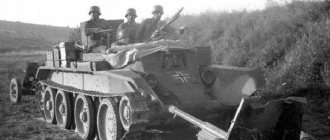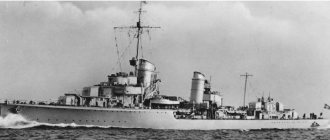Recipients of the German Cross
The award had two degrees:
German Cross in Gold - for merits directly on the battlefield, those nominated for the award had to be awarded the Iron Cross 1st class, and have performed at least 6 actions worthy of being awarded the Iron Cross. During its existence, it was awarded to 24,204 people, including 14 citizens of other states.
German Cross in silver - for actions outside of a combat situation, in order to qualify for the award, it was necessary to be previously awarded the Cross of Military Merit, 1st class, and perform from 6 to 12 acts worthy of being awarded the Cross of Military Merit, 1st class. During the war, 1,114 people received the German Eastern Star Cross.
Other Reich awards: Medal In Memory of March 13, 1938 - an award for participants in the annexation of Austria, the birthplace of Adolf Hitler, to the Third Reich.
Recipients[edit]
Select recipients for both gold and silver:
- SS-Gruppenführer and Generalleutnant of Police Globocnik, 7 February 1945 (gold) and 20 January 1945 (silver)
- SS-Gruppenführer Streckenbach, Bruno, 15 December 1943 (gold)
- Major General Ernst Merck, 11 February 1944 (gold) and 6 July 1942 (silver)
- SS-Standartenführer and Police Colonel Walther Rauff, 7 February 1945 (gold) and 20 May 1943 (silver)
- General Felix Schwalbe, 7 December 1944 (gold) and 30 November 1943 (silver)
- Lieutenant General Bodo Zimmermann, 25 September 1944 (gold) and 15 February 1943 (silver)
- SS-Hauptsturmführer Alfred-Ingemar Berndt, 17 July 1943 (gold)
- SS-Sturmbannführer Mohnke, 26 December 1941 (gold)
- SS-Obersturmbannführer Fritz Nochlin, 15 November 1942 (gold)
- Lieutenant General Walter Krupinski, 27 August 1942 (gold)
Foreign recipients[edit]
In October 1942, the right to receive the Golden German Cross was extended to the armed forces of the Allied countries on the same basis as for awards to German troops. [6] Selected foreign recipients of the German Golden Cross include:
Belgium
- SS Standartenführer Leon Degrelle, 9 October 1944
Croatia
- Lieutenant Cvitan Galic, 23 June 1943
- 1st Lieutenant Mato Dukovac
Estonia
- First Lieutenant Hando Ruus [et], 30 December 1944
Finland
- General Eric Heinrichs, 17 August 1943
- Lieutenant General Jarl Lundqvist, 9 November 1943.
- Lieutenant General Karl Lennart Oesch, 5 August 1944
Italy
- Vice Admiral Luigi Sansonetti, 18 January 1942
- Marshal Ettore Bastico, 5 December 1942.
- Colonel General Rhino Corso Fougier, 18 January 1943.
Latvia
- Untersturmführer Karlis Musins
- Standartenführer Wilis Janums, 1 March 1945
Romania
- General Gheorghe Avramescu, 25 October 1942
- Major General Leonard Mochulski, 25 October 1942
- Major General Ermil Georgiou, 11 February 1943
- Captain Nicolae Dabija, 10 February 1944
Spain
- Major General Emilio Esteban Infantes y Martin, 9 April 1943.
In total, about 26 Waffen-SS volunteers from Belgium, Denmark, Estonia, Finland, Hungary, Latvia, the Netherlands and Norway received the German Cross in Gold.
History of the Order of the German Cross
After the outbreak of war on the Eastern Front, it became necessary to create an intermediate award, between the Iron Cross first class and the Knight's Cross. This award was established in September 1941, the German Cross "Eastern Star".
The award had two degrees: gold and silver. At the same time, to receive the highest award, the Knight's Cross, it was not necessary to be the owner of this award, just as the awards were independent of each other, to receive an award in gold there was no need at all to be the owner of the German Cross in silver.
The award was an eight-pointed star, in the center of which was placed a white enameled circle with a swastika, the circle was decorated with a gold (silver for an award in silver) laurel wreath, at the bottom of which the date 1941 was placed. For its shape and unusually large size (63.5 mm .), among the troops the award was nicknamed “Hitler’s scrambled eggs.”
The award was inconvenient to wear, especially for soldiers who had to fight in the limited space of their vehicles (tankers, pilots, submariners), so a fabric version of the award was established on June 5, 1942.
In 1942, a third version of the award was created, the German Cross in gold and diamonds, this award differed from the gold version only in the presence of diamonds on the wreath. The award was supposed to take a place between the Knight's Cross with Oak Leaves and the Knight's Cross; 20 copies were made, but by that time the constantly deteriorating situation at the front did not allow any awards to be made. Until the end of the war, the made copies of the German Cross in gold and diamonds were kept by Dr. Doehle; after the capture of Klesheim Castle by the Americans, they were stolen by soldiers and officers and only 3 copies ended up in historical museums.
Germanic (German) cross – Kriegsorden des Deutschen Kreuzes (DK)
The German (German) Cross is an award of the 3rd Reich during the Second World War, established on September 28, 1941 by Adolf Hitler, as a kind of step between the Iron Cross 1st class and the Knight's Cross.
The award was prepared specifically to honor the troops of the Third Reich who stormed the walls of Moscow. Initially, the award had two degrees: the Golden German Cross and the Silver German Cross. Later, in 1942, a special version of the award was established - the Golden German Cross with Diamonds (the right to award which the Fuhrer reserved personally for himself), which in the hierarchy of awards of the Third Reich was supposed to be higher than the Knight's Cross to the Iron Cross, but below the Knight's Cross with Oak Leaves . At the same time, the German Cross was a completely independent award. Thus, many military personnel awarded the Knight's Cross were not awarded the German Cross, and a large number of holders of the German Cross in Gold did not have the Knight's Cross. The recipients could be all soldiers and officers of the Wehrmacht, the SS, as well as personnel of paramilitary and paramilitary organizations and formations such as: police, fire brigades, railway units, assault troops (SA), National Socialist Mechanized Corps (NSKK), national socialist aviation corps (NSFC), etc. By the way, several members of such auxiliary services were awarded this award for successful raids against partisans and for organizing air defense.
When awarded the German Cross, Waffen SS soldiers automatically also received a Death's Head ring.
From October 16, 1942, the order could be awarded to military personnel of allied countries who had previously been awarded the Iron Cross.
SS Gruppenführer Odilo Globocnik and Admiral Paul Meixner are the only ones awarded both German crosses in gold and silver.
The Military Order of the German Cross was designed by the Munich artist-jeweler, Professor Robert Klein.
The cross was a rather complex structure consisting of five components (main plate with clasp, applied relief plate with rays, central disk, applied swastika, wreath) and was the most difficult to produce of all German awards.
The order has the shape of an eight-pointed star with a diameter of ~6.2-6.4 cm. The main plate has a convex shape and was made in two versions: initially from silver-plated tombak and nickel silver, and by the end of the war from kupal; Accordingly, the awards are easily distinguishable by weight, since a plate from a bathhouse weighs about half as much as a plate from a tombak. All other parts and the fastener are attached to the main plate. The overlay plate with relief rays was usually made of tombac - oxidized or painted in a dark color (from gray to dark brown). The convex central disk was made of silver-plated tombac or nickel silver and has a white enamel coating with two red enamel circles on the edges. An applied swastika made of tombak is covered with black enamel in a silver frame. A convex wreath with relief laurel leaves intertwined with ribbons with the date “1941” at the bottom, gilded or silvered depending on the degree of the award. The German Cross wreath in gold and diamonds is additionally decorated with diamonds.
The size of the award varies slightly, but the design of the badge is the same regardless of the manufacturer, with the exception of the number and structure of rivets, the design of the clasp and the level of detail of the applied wreath.
This award of the 3rd Reich was produced by only six jewelry companies: Deschler & Sohn, München, CE Junker, Berlin, CF Zimmermann, Pforzheim, Steinhauer & Lück, Lüdenscheid, Gebrüder Brothers Godet & Co., Berlin) and Otto Klein (Otto Klein & Co., Hanau).
Lost or damaged copies of the order could only be obtained from the Order Chancellery (Ordenskanzlei) of the Presidential Office of the Fuhrer, since their commercial production and sale through specialized stores, unlike other awards, was prohibited by a special decree of 1941.
A sewn version of the Order of the German Cross to be worn on a field uniform.
Due to the rather large size and weight of the award, the German Cross was very inconvenient to wear, especially for military personnel on submarines and aircraft pilots, and therefore, on June 5, 1942, a sewn version of the German Cross was introduced and officially approved by the Fuhrer for wearing. The quality of the embroidered sign was very high. It was made of fabric using machine embroidery with an applied metal wreath. The cloth backing had variations depending on the color tones of the uniforms of different branches of the army: for the Wehrmacht and Waffen SS - gray, for the Luftwaffe - blue-gray, for the Kriegsmarine and tank formations - black.
The order was attached to clothing using a wide clasp or sewn in the center of the right breast pocket in the case of a woven version. In the absence of pockets, it was attached to the right side of the chest 15 cm below the troop emblem.
German Cross in Gold – Deutsches Kreuz in Gold (DK-G)
Awarded exclusively for military merits. To be awarded, it was necessary to have the Iron Cross, 1st degree, and to perform from 6 to 12 acts in combat conditions. The Kriegsmarine also took into account the destruction of a certain number of enemy mines of various effects.
The first award took place on October 18, 1941. 38 military personnel received the Military Order of the German Cross, including the commander of the 11th Infantry Regiment of the 35th Infantry Division, Oberst Paul Seyffardt (1894-1979).
Number of recipients: ground forces - 14,639 people, Kriegsmarine - 1,481 people, Luftwaffe - 7,248 people, police and SS - 822 people, 14 foreigners.
German Cross in Silver – Deutsches Kreuz in Silber (DK-S)
Awarded for services not related to direct participation in hostilities: for competent leadership and decision-making that ultimately led to victory in the battle. To be awarded, it was necessary to have the Cross of Military Merit, 1st degree.
The decree of January 30, 1943 prescribed that those awarded the German Cross in silver could be awarded the German Cross in gold, but in this case only the “golden” version of the award was to be worn. Only two people were awarded both German Crosses: SS Gruppenführer Odilo Lotario Globocnik (1904-1945) and Admiral Paul H. Meixner.
Number of recipients: ground forces - 874 people, Kriegsmarine - 105 people, Luftwaffe - 65 people, police and SS - 702 people.
German Cross in Gold with Diamonds – Deutsches Kreuz in Gold mit Brillanten
In the summer of 1942, the Chancellery of the Order of the Presidential Chancellery of the Fuhrer, the jewelry company Hofjuwelier P. Rath, München, ordered a German cross in Gold and Diamonds. The award was identical to the "golden" version of the order, but small diamonds were added to the wreath. Already in October 1942, 20 samples of the award were delivered to the Berlin Reich Chancellery. Small diamonds were added to the wreath, and the cost of the order was 2,800 Reichsmark.
When awarding, it was planned to present an award folder, as when awarding the Knight's Cross to the Iron Cross. However, the constant deterioration of the situation on all fronts did not give reasons for awards, and these awards remained in the safe of the head of the German Order Chancellery, Dr. Heinrich Doel, until the end of the war. In the last days of the war, he took them with him to Klessheim Castle, which was later captured by the American military. The bulk of the awards disappeared and only three of them ended up in the West Point Museum at the Military Academy in West Point, New York, USA.
Denazified German (German) crosses issued after 1957.
German Cross model 1957
In post-war Germany, wearing awards with Nazi symbols was prohibited. On July 26, 1957, a special law was passed in Germany, allowing the wearing of awards received during World War II, but the awards should not have Nazi symbols. Therefore, special denazified copies of the German Cross were issued. On the “gold” version, instead of a swastika, an image of a denazified Iron Cross with a bunch of oak leaves was placed, on the “silver” version - the Cross of Military Merit with an empty pole in the middle.
Price of the Order of the German Cross
German cross in gold - from 2000 USD With a short pin, 6 rivets - 2300 USD; 10 rivets - 2500 USD; 14 rivets - 2700 USD Copies produced at the front - from 900 USD. Woven version from 550 USD Document: ground forces and Luftwaffe – from 1000 USD; Kriegsmarine – from 1700 USD; parachute detachments and submariners - from 2300 USD; SS – from 4500 USD Case from 1000 USD
German cross in silver - from 2700 USD; without manufacturer – from 2500 USD With a short pin, 6 rivets - 3200 USD; 10 rivets - 3400 USD; 14 rivets - 3800 USD Copies produced at the front - from 900 USD. Document: ground forces, Kriegsmarine, Luftwaffe - from 2800 USD. Case from 1300 USD
Iron Cross - a reward “for war”
The Iron Cross was established on the initiative of the Prussian Emperor Friedrich Wilhelm II. von Preußen. Despite the fact that the state at that time did not lack regalia, the monarch wished to introduce a new award, which was intended for those who distinguished themselves in battles with the troops of Napoleon Bonaparte (Napulione Buonaparte). Friedrich was so captivated by this idea that he drew the first sketch of the cross with his own hand, but then changed his mind and entrusted the work on the design to the eminent architect and artist Karl Friedrich Schinkel.
The Iron Cross, according to the artist’s idea, was supposed to be simple, since it was planned to be awarded to the entire military personnel - from soldiers to generals. Therefore, Schinkel abandoned the order paraphernalia that was popular at that time - crowns, swords and laurel wreaths, and took as a basis the Teutonic cross, which since the 14th century had been a symbol of knightly brotherhood. As a result, the order badge came out strict, but elegant. The material for its manufacture was iron, and the decorations were silver edging, a modest bas-relief of oak leaves and the emperor's initials. Friedrich was delighted with the artist’s work and no longer remembered his ideas.
The decree establishing the regalia was signed on March 10, 1813. At first, the order had three degrees and was intended to be awarded for distinction in battles with the main enemy - Napoleon. The first gentlemen appeared already in May of the same year. The combined forces of Russia and Prussia managed to drive the French out of the village of Gross-Gerschen, and as a result, more than nine thousand military personnel received the Iron Cross 2nd class. By the end of the summer, the command was awarded the highest degree. In particular, the Grand Cross was awarded to Field Marshal Gebhard Leberecht von Blücher, who led the Silesian Army.
After the successful defeat of Napoleonic troops, the emperor decided to establish a fourth, exceptional degree of the Iron Cross with golden rays or the Great Star. The award was received by von Blücher, who commanded the army at the Battle of Waterloo. The victory temporarily put an end to the history of the order. It received a rebirth only in 1870, when the next aggravation of Franco-Prussian relations moved into the stage of military conflict. The appearance of the sign remained almost unchanged - the imperial crown was placed on the upper ray, and the year of the revival of the regalia was placed on the lower ray.
By that time, the status of the order was finally determined - it became an award for a specific war. This time the battles lasted less than a year and ended in the complete defeat of the French. 44.5 thousand people received 1st and 2nd class orders. The award was presented for several years after the end of the military conflict for past merits, and then it remained in oblivion for more than forty years.
